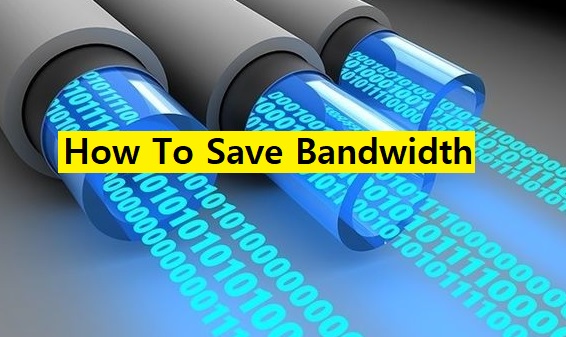Streaming videos has become an integral part of our digital lives, offering various entertainment options at our fingertips. However, streaming can consume significant bandwidth, leading to high data usage and potential internet speed limitations. To help you optimize your streaming experience and save bandwidth without compromising video quality, we have compiled a list of practical tips to implement while enjoying your favorite videos.

Guide to Save Bandwidth While Streaming Videos
- Adjust Video Quality Settings: One of the most effective ways to save bandwidth is to adjust the video quality settings. Most streaming platforms offer options to change the resolution or bitrate of the video. Lowering the quality to a lower resolution, such as 480p or 720p, can significantly reduce bandwidth usage. Experiment with different settings to balance data consumption and acceptable video quality.
- Limit Streaming Quality on Mobile Devices: Streaming videos on mobile devices can quickly consume your data plan. To save bandwidth on mobile, adjust the streaming quality settings to a lower resolution or use the “Auto” setting, which changes the quality based on your internet connection. Additionally, use Wi-Fi networks whenever possible to avoid using mobile data altogether.
- Utilize Data Saver Modes: Many streaming platforms and apps provide data saver modes or low-data options. Enabling these modes can compress videos and reduce the data required for streaming. These settings can be found in the app or platform’s settings menu. By utilizing data saver modes, you can enjoy videos while saving considerable bandwidth.
- Avoid Background Streaming: Be mindful of applications or devices streaming videos in the background. For example, leaving a video playing on a smart TV or computer without actively watching it will unnecessarily consume bandwidth. Ensure that all devices are paused or closed when not in use to prevent unnecessary data usage.
- Download Videos for Offline Viewing: Many streaming platforms offer the option to download videos offline. This feature allows you to download videos over Wi-Fi and watch them later without using any additional data. Take advantage of this functionality when available, especially if you plan to rewatch videos or enjoy them in areas with limited or costly internet access.
- Stream during Off-Peak Hours: Internet traffic is typically highest during peak hours when many users are online simultaneously. Streaming during these periods can lead to buffering issues and slower speeds. To optimize your streaming experience and save bandwidth, schedule your streaming sessions during off-peak hours when internet traffic is lighter. This can result in smoother playback and lower data consumption.
- Close Background Tabs and Applications: Close any unnecessary tabs or applications running in the background while streaming. These can consume bandwidth and reduce the available resources for streaming. Closing unused tabs and applications ensures that your streaming session receives the maximum available bandwidth.
- Monitor Data Usage: Keep track of your data usage by monitoring your internet service provider’s data caps or using built-in tools on your devices. Regularly reviewing your data usage allows you to identify any unusual spikes or patterns and adjust your streaming habits accordingly.
- Use Ad Blockers: Advertisements embedded in streaming platforms can consume significant bandwidth. Consider using ad blockers or extensions on your web browser to reduce the number of ads displayed during your streaming sessions. However, some streaming platforms may require you to turn off ad blockers to access their content.
- Optimize Home Network: Optimizing your home network can improve streaming efficiency and save bandwidth. Place your router in a central location to ensure better coverage, update your router’s firmware regularly, and use Wi-Fi extenders or mesh systems to eliminate dead spots. A strong and stable connection can prevent buffering and enhance the streaming experience.
- Choose the Right Streaming Service: Different streaming services have different video quality settings and compression algorithms. If you have limited bandwidth, consider choosing a streaming service that offers more flexibility in adjusting video quality. Compare other platforms and their data-saving options to find the one that suits your bandwidth-saving needs.
Streaming videos has become a popular and convenient way to enjoy a wide range of content. However, it’s essential to be mindful of your bandwidth usage to avoid exceeding data caps, experiencing slow internet speeds, or incurring additional costs. By implementing the tips mentioned in this guide, you can save bandwidth while streaming videos without sacrificing the quality of your viewing experience.
Remember, everyone’s streaming needs and preferences may differ, so feel free to experiment with different settings and techniques to find what works best for you. By being mindful of your bandwidth usage, you can continue to enjoy your favorite videos while staying within your data limits and ensuring a smooth streaming experience.
Does Streaming Consume a lot of data?
Streaming can consume a significant amount of data, especially when watching videos in high definition (HD) or ultra-high definition (UHD). The data consumption varies depending on the streaming platform, video quality settings, and the video’s length. Here’s a general idea of the data usage per hour for different video quality settings:
- Standard Definition (SD): Streaming videos in SD typically consume around 0.7 to 1.5 GB of data per hour.
- High Definition (HD): Streaming videos in HD can use around 1.5 to 3 GB of data per hour.
- Ultra-High Definition (UHD/4K): Streaming videos in UHD or 4K resolution can consume about 7 to 20 GB of data per hour.
It’s important to note that these estimates are approximate and can vary depending on the specific streaming service, compression algorithms used, and the content being streamed. Streaming music, live streams, and other online content can also consume data, although at lower rates than video streaming.
To manage data usage while streaming, consider adjusting video quality settings, utilizing data-saving modes, downloading content for offline viewing, and monitoring your data consumption. These practices can help you balance enjoying high-quality content and managing your data usage effectively.
